Damage Detection Method Using Support Vector Machine and First Three Natural Frequencies for Shear Structures ()
1. Introduction
Structural health monitoring (SHM) has become a major focus of research in the area of structural dynamics. Many damage detection algorithms based on the modal properties of a structure including the natural frequencies, mode shapes, curvature mode shapes and modal flexibilities have been studied for several decades. However, most algorithms have difficulty identifying the precise location and magnitude of the damage. Moreover, even if such identification is possible, the accuracy and reliability of the properties are not sufficient [1].
Although frequency shift methods are simple and easy to apply, they have significant practical limitations. For instance, the measurements have to be very precise if the level of damage is not great. In addition, the change in the natural frequency associated with a certain mode in a structure does not provide any spatial information about where the damage occurred, because modal frequencies are global properties of the structure. Salawu [2] presented a review on detection of structural damage through changes in frequency. The approach is based on the fact that natural frequencies are sensitive indicators of structural integrity. The relationship between frequency changes and structural damage was discussed.
In 1998, Doebling et al. [3] reviewed the literature on vibration-based damage identification methods. Many of the methods use changes in the natural frequencies to detect damage. The amount of literature is large; they comprise not only applications to various structures, but also theoretical work on the use of frequency shifts for damage detection.
Many methods perform well at frequency-based damage identification in small degrees of freedom. For larger engineering structures, the number of obtained natural frequencies is less than the number of structural elements. This is one of the reasons why frequency change methods have limited abilities to detect damage [4]. To overcome these problems, some researchers have been using the substructure method [5], error matrix method [6], sensitivity-based method [7], combine sensitivity and statistical-based methods [8], and so on.
The SVM is a powerful tool for pattern recognition and it seems useful for detecting the location of damage. This requires data from the undamaged and damaged structure successfully train and classify the structure into damaged and undamaged classes. SVM has better generalization performance than other methods of problems of damage detection and location [9]. Meyer [10] presented a benchmark study comparing the performance of SVMs with other classification techniques for natural and artificial datasets.
Previous studies [11-15] conducted at the Mita Laboratory of Keio University, demonstrated that damage detection methods using SVM worked well in many cases. The scope of this work is to develop an improved method to identify the location of damage by using a limited number of sensors. We know that a natural frequency change associated with a certain mode does not provide spatial information about structural damage, but multiple natural frequency changes can give such information. However, in practical situations, the obtained natural frequencies are usually smaller than the degrees of freedoms. The proposed method only requires the first three natural frequencies. The first three natural frequencies are used to obtain the new damage location indicators. These indicators are the feature vectors for pattern recognition.
2. Damage Detection of Structures Using Support Vector Machine
2.1. Sensitivity of Damage Location Indicators
The rth natural circular frequency, 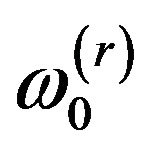 , of an N-degreeof-freedom (as shown in Figure 1) undamaged structure was given as Equation (9) in [16]:
, of an N-degreeof-freedom (as shown in Figure 1) undamaged structure was given as Equation (9) in [16]:
 (1)
(1)
where  is the first frequency of undamaged structure.
is the first frequency of undamaged structure.
 (2)
(2)
The wave propagation constant 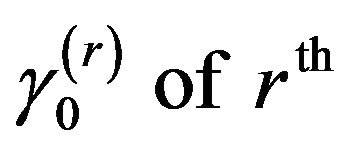 mode of safe state can be defined as:
mode of safe state can be defined as:
 (3)
(3)
Moreover, the  mode of the ith element damaged state was calculated by:
mode of the ith element damaged state was calculated by:
 (4)
(4)
The change 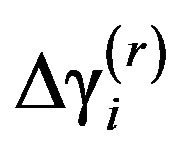 due to damage
due to damage  to the ith element, can be obtained from Equation (28) in [17]:
to the ith element, can be obtained from Equation (28) in [17]:
 (5)
(5)

Figure 1. Simplified structural model with N-DOFs.
From Equation (5) above, it can be seen that the change, 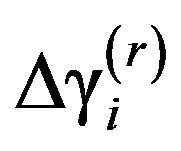 , depends only on the location of damage (i) and the degree of freedom N.
, depends only on the location of damage (i) and the degree of freedom N.
The change 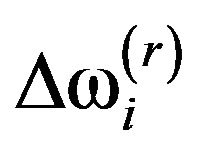 in the rth natural circular frequency due to
in the rth natural circular frequency due to 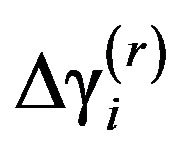 can be found by combining Equations (3)- (5):
can be found by combining Equations (3)- (5):
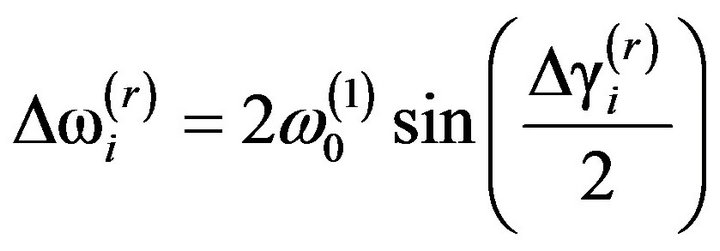 (6)
(6)
The change in the natural frequency can be calculated from Equations (1) and (6):
 (7)
(7)
which is the same as Equation (29b) in [17].
The above relation showed that the damage was related to the shifts in the natural frequencies. The ratio of the change in the rth and sth frequencies can be used as a pattern depending on the location of the damage:
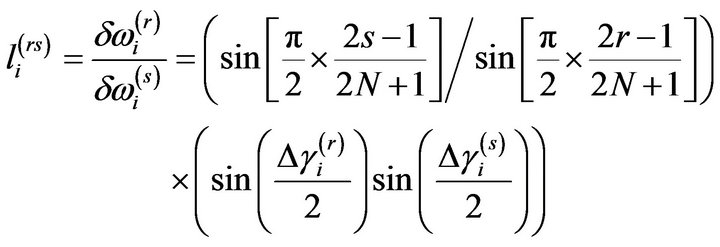 (8)
(8)
Equation (8) demonstrates the sensitivity of the change in ratio of the shift of a few natural frequencies to the location of the damage. This should be able to be used as a damage location index.
2.2. Construction of Feature Vectors for Support Vector Machine
The sensitivity analysis ideally involves all natural frequencies. However, in some cases, not all of the natural frequencies are available. Therefore, the errors due to incomplete mode parameters should be accounted.
To solve this problem, we define new damage location indicators that have good pattern recognition ability with only the first three natural frequencies. By using the ratio in Equation (8), we defined two damage location indicators:
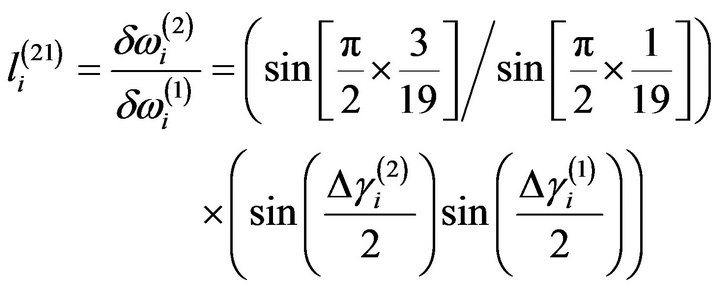 (9a)
(9a)
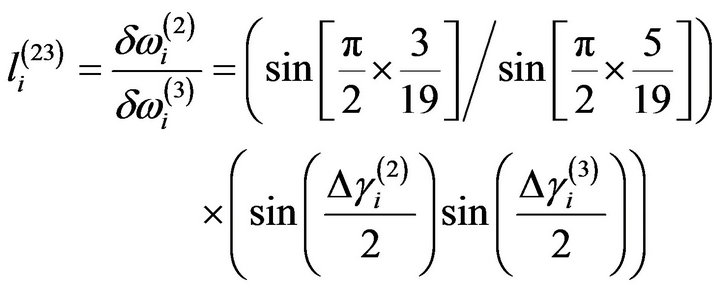 (9b)
(9b)
The changes in  and
and  can be used as feature vectors. They may be able to be used as to identify the damage location by using a few lower modal frequencies.
can be used as feature vectors. They may be able to be used as to identify the damage location by using a few lower modal frequencies.
2.3. Support Vector Machine
The Support Vector Machine (SVM) is a mechanical learning system that uses a hypothesis space of linear functions in a high dimensional feature space [18,19]. It has been used for structural damage detection because of its ability to form an accurate boundary from a small amount of training data.
The simplest model, Linear SVM (LSVM), works when the data are linearly separable in the original feature space. In most cases, nonlinear classification using the same procedure as in LSVM is possible as a result of introducing nonlinear functions called Kernel functions without having to be conscious of the actual mapping space. This extension to nonlinear feature spaces is called Nonlinear SVM (NSVM) (Figure 2).
3. Numerical Verification
To show the feasibility of the proposed method, N-story structures were modeled as one-dimensional lumped mass shear models, as shown in Figure 1. Structures with N = 5, 9 and 21 stories were analyzed. Three percent was chosen as the damping ratio for all modes. The data sampling frequency was 200 Hz.
A reduction in the story stiffness was regarded as damage to the structure. Training feature vectors were generated by assuming three levels of stiffness reduction, 10%, 20%, and 30%, for each story, and the corresponding feature vectors  were generated for each damage pattern. A feature vector consisting of zero elements was used to indicate the undamaged structure.
were generated for each damage pattern. A feature vector consisting of zero elements was used to indicate the undamaged structure.
Assuming five levels of stiffness reduction, 8%, 16%,
24%, 32% and 40% for each story, (5 × N) feature vectors were used to verify the proposed method. The first five data corresponded to 8%, 16%, 24%, 32% and 40% stiffness reductions in the first story. The second five data are for the stiffness reduction in the second, third, etc., sets of five data were for the stiffness reductions in the second, third story, and so on. The last data indicated the no damage case.
SVMi denotes a machine that distinguishes the pattern with damage in the ith story from the other patterns.
3.1. Five-story Shear Structures (N = 5)
We considered a five-story structure with the same mass and the same stiffness for all stories: mi = 1000 ton, ki = 2 × 103 MN/m.
The undamaged natural frequencies of the structure were obtained as 2.03, 5.91, 9.32, 11.98 and 13.66 Hz for the 1st, 2nd, 3rd, 4th and 5th modes, respectively.
As mentioned above, a reduction in story stiffness was regarded as damage to the structure. Five damage cases (damage to the 1st, 2nd, 3rd, 4th and 5th stories) were studied.
Figure 3 shows the output of SVMi with the feature vectors being the change in the first three modal frequencies  of the previous method [12-14]. Here, we can see some miss-classifications in the outputs of SVM1 and SVM3.
of the previous method [12-14]. Here, we can see some miss-classifications in the outputs of SVM1 and SVM3.